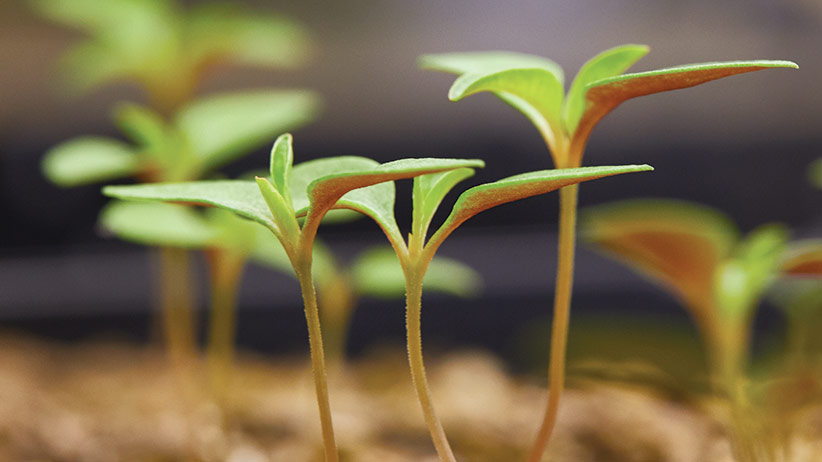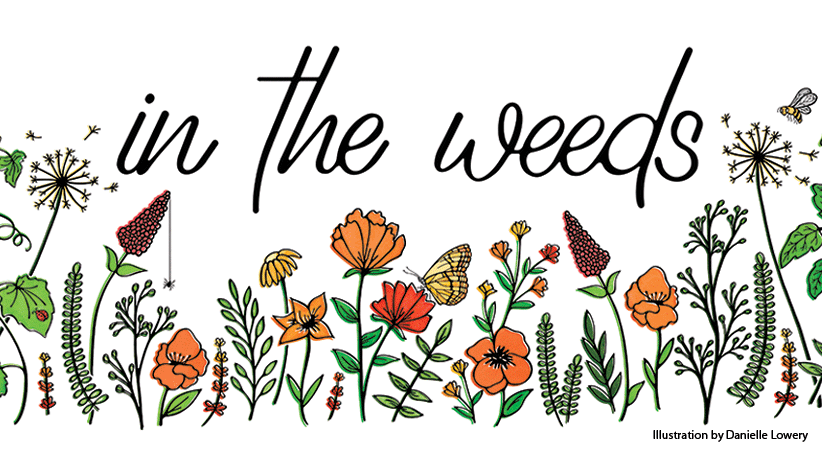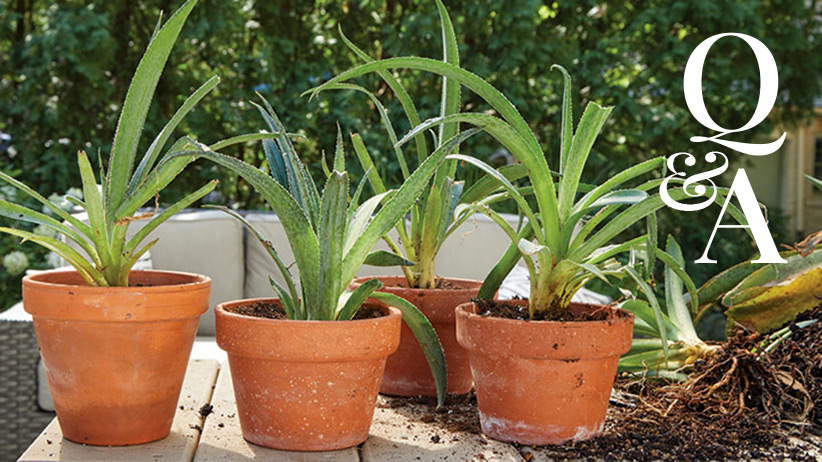Start seeds at the right time
You have the seed starting mix, growing trays and ordered packets of seed — now are you wondering exactly when to start seeds indoors? Getting the timing right can make the difference between plants that lanquish and those that thrive. Planted too early or too late, seeds can rot or young plants may struggle to get established.
Start by finding the last expected frost date for your area. From there count back the appropriate number of days or weeks and you have the planting date. The charts below provide the timing as well as the germination temperature for starting 24 common flower and vegetable seeds. In addition, you'll find the recommended outdoor temperatures that are best for transplanting. Though the germination temperature needs vary, once seeds have sprouted, most seedlings do just fine in a sunny room that’s 60 to 70 degrees F until it’s time to move them outdoors.
Harden off plants to acclimate to the outdoors
Instead of taking your tender seedlings from the warmth and shelter of your home into the bright sunlight and gusty winds of spring be sure to give them some time to acclimate to their new growing conditions. Harden off young plants by setting them in a sheltered spot outside out of direct sunlight for a couple of hours to start with each day. Gradually increase the time they spend outdoors over the course of a few days. If there's a late-season storm skip that day and resume when the weather is warm again. Get more details and tips in our article How To Harden Off New or Overwintered Plants.
Seed-starting jargon
Before getting started here’s a quick guide to some of the technical terms used in the charts below.
Germination
When a seed produces growth it has germinated.
Needs light to germinate
Light is an important element that helps some seeds germinate. There’s no need to make a hole when you’re planting these seeds. Just sprinkle them on the surface of the seed-starting mix and press them lightly into the mix to ensure they make contact and stay in place.
Seed germination temperatures
Though it's not strictly necessary, this is the temperature range to keep the potting mix (use a seed starting heat mat) to encourage the quickest germination.
Stratification
Some seeds need a period of cold and moisture to break down a heavy seed coat in order to germinate. Gardeners can mimic this natural process by placing seeds in a container of moist sand or vermiculite and storing it in the refrigerator at 41 degrees F for at least 4 weeks. Perennials seeds often need stratification.
Scarification
Tough seed coats of sweet peas, nasturtiums and others need to nicked, cracked or softened so water can penetrate and encourage the seed to grow. Use a file or sandpaper to make a shallow nick or cut in the seed coating. You can also soak the seeds in water overnight to soften the coating but no longer or they may rot.
You Might Also Like:
How to Prechill or Stratify Garden Seeds
Video: Sow Seeds Outdoors in Winter
How to Transplant Seedlings in your Garden
How to Start Seeds Outdoors
Seedlings that can be transplanted outside in early spring
These plants can can be transplanted outdoors in spring when it’s 40 to 50 degrees F during the day.
| Plant name Botanical name | Seed germination temperatures | Days to germination | Weeks to planting seedlings outdoors | Comments |
|---|---|---|---|---|
| Broccoli Brassica oleracea italica |
70 to 75°F | 7 to 10 | 5 to 7 | Set outside up to 2 weeks before last frost |
| Cabbage Brassica oleracea capitata |
70 to 75°F | 5 to 10 | 5 to 7 | Can take a light frost |
| Cauliflower Brassica oleracea botrytis |
75 to 80°F | 5 to 10 | 5 to 7 | Prefers cool temps or won’t produce head |
| Pansy Viola x wittrockiana |
65 to 75°F | 7 to 15 | 8 to 12 | Benefits from stratification; can take frost; foliage freezes at 10°F |
| Sweet peas Lathyrus odorata |
55 to 65°F | 14 to 21 | 4 to 6 | Benefits from scarification; can also be direct-sown outdoors; can take a light frost |
Seedlings that can be transplanted outdoors after average last frost date
When temperatures are starting to warm up and the last average frost date for your area has gone by you can transplant these young plants out in the garden.
| Plant name Botanical name | Germination temperatures | Days to germination | Weeks to planting outdoors | Comments |
|---|---|---|---|---|
| Artichoke Cynara scolymus |
70 to 80°F | 18 to 21 | 6 to 8 | Benefits from stratification; takes 5 to 7 months from sowing to crop |
| Bells of Ireland Moluccella laevis |
65 to 68°F | 12 to 21 | 6 to 8 | Needs light to germinate; benefits from stratification; doesn’t like roots disturbed — use peat pots |
| Butterfly weed Asclepias tuberosa |
70 to 75°F | 21 to 28 | 6 to 8 | Doesn’t like roots disturbed — use peat pots |
| Celery Apium graveolens |
70 to 75°F | 20 to 25 | 10 to 12 | Seedlings need constant moisture to develop |
| Foxglove Digitalis purpurea |
65 to 70°F | 15 to 20 | 10 to 12 | Needs light to germinate; biennial so may not bloom first year |
| Hyacinth bean Lablab purpureus |
65 to 70°F | 5 to 12 | 6 to 8 | Benefits from stratification; can take up to 80 days to get beans |
| Sage Salvia officinalis |
60 to 70°F | 7 to 21 | 6 to 8 | Needs light to germinate; let dry out between watering to avoid rot |
| Statice Limonium sinuatum |
68 to 75°F | 12 to 20 | 8 to 10 | Needs light to germinate; plant seedlings outdoors 12 in. apart |
| Sweet alyssum Lobularia maritima |
65 to 70°F | 8 to 10 | 4 to 5 | Plant seedlings outdoors 6 to 8 in. apart |
Seedlings you should wait to transplant outside until the danger of frost has past
These warm-weather lovers are the last seedlings to be transplanted outdoors. They do best after all danger of frost has gone by and the soil has warmed — usually when daytime temperatures are around 70 degrees F and the nights are in the 50s it's safe to transplant this group.
| Plant name Botanical name | Germination temperatures | Days to germination | Weeks to planting outdoors | Comments |
|---|---|---|---|---|
| Celosia Celosia spp. and hybrids |
70 to 80°F | 8 to 14 | 4 to 6 | Pinch tip when 8 to 12 in. tall for branching |
| Coleus Plectranthus spp. and hybrids |
70 to 75°F | 10 to 14 | 6 to 8 | Needs light to germinate; pinch tip when plants have four to six sets of leaves |
| Cucumber Cucumis sativus |
68 to 72°F | 7 to 10 | 4 to 6 | Don’t disturb roots when transplanting |
| Cup & saucer vine Cobaea scandens |
70 to 75°F | 10 to 30 | 6 to 8 | Benefits from scarification; vigorous grower, plant near a strong trellis |
| Eggplant Solanum melongena |
80 to 90°F | 10 to 14 | 8 to 10 | Don’t set out too early, cool temps stunt growth |
| Floss flower Ageratum houstonianum |
78 to 82°F | 5 to 10 | 6 to 8 | Needs light to germinate; plant seedlings outdoors 9 to 12 in. apart |
| Joseph's coat Amaranthus tricolor |
70 to 75°F | 10 to 15 | 3 to 4 | Let dry out between watering to avoid rot |
| Nasturtium Tropaeolum majus |
60 to 65°F | 7 to 14 | 4 to 6 | Benefits from scarification; can also be direct-sown outdoors; no need to fertilize after planting outside |
| Pepper Capsicum annuum |
80 to 90°F | 7 to 10 | 6 to 8 | Don’t set out too early; cool temps stunt growth |
| Tomato Solanum lycopersicum |
80 to 90°F | 7 to 14 | 5 to 6 | Plant leggy seedlings deep and they’ll form roots all along the stem for added support |
You Might Also Like:
How to Harvest and Plant Milkweed Seeds
Perennial Seeds to Sow in Fall
How to Save Tomato Seeds
How to Collect Seeds from Your Garden

















